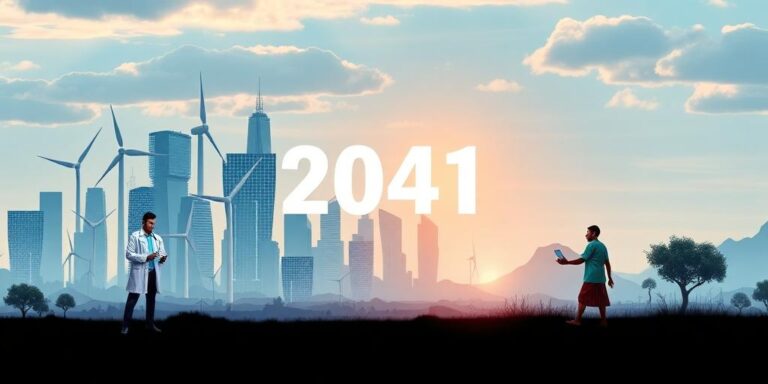Could AI Solve the World’s Biggest Problems by 2040?
Artificial intelligence (AI) is rapidly evolving, prompting discussions about its potential to address some of humanity’s most pressing challenges. This post explores how AI might contribute to solving climate change, disease, and poverty by 2040.
Climate Change
AI can play a crucial role in mitigating climate change through various applications:
- Optimizing Energy Consumption: AI algorithms can analyze energy usage patterns to optimize consumption in buildings, transportation, and industrial processes, reducing waste and emissions.
- Enhancing Renewable Energy: AI can improve the efficiency of renewable energy sources like solar and wind power by predicting energy production and optimizing grid management.
- Developing Climate Models: AI can process vast amounts of climate data to create more accurate climate models, helping scientists better understand and predict the impacts of climate change.
- Supporting Carbon Capture: AI can optimize carbon capture and storage processes, making them more efficient and cost-effective.
Disease
AI is transforming healthcare, offering potential solutions for disease prevention, diagnosis, and treatment:
- Drug Discovery: AI can accelerate drug discovery by analyzing complex biological data to identify potential drug candidates and predict their efficacy and safety.
- Personalized Medicine: AI can analyze individual patient data to develop personalized treatment plans tailored to their specific needs and genetic makeup.
- Early Disease Detection: AI algorithms can analyze medical images and patient records to detect diseases like cancer and Alzheimer’s at early stages, improving treatment outcomes.
- Epidemic Prediction and Management: AI can analyze data from various sources to predict and manage epidemics, enabling timely interventions and resource allocation.
Poverty
AI can contribute to poverty reduction by enhancing economic opportunities, improving access to resources, and promoting social inclusion:
- Financial Inclusion: AI-powered platforms can provide access to financial services for underserved populations, enabling them to save, borrow, and invest.
- Precision Agriculture: AI can optimize farming practices by analyzing soil conditions, weather patterns, and crop yields, helping farmers increase productivity and income.
- Education and Skills Training: AI-powered educational tools can provide personalized learning experiences and skills training, improving employment prospects for disadvantaged individuals.
- Resource Allocation: AI can optimize the allocation of resources for social programs, ensuring that they reach those who need them most effectively.
Challenges and Considerations
While AI offers immense potential, several challenges and considerations must be addressed:
- Data Bias: AI algorithms can perpetuate and amplify existing biases in data, leading to unfair or discriminatory outcomes. Ensuring data diversity and fairness is crucial.
- Ethical Concerns: The use of AI raises ethical concerns about privacy, security, and accountability. Establishing clear ethical guidelines and regulations is essential.
- Job Displacement: AI-driven automation may lead to job displacement in certain sectors. Investing in education and training programs to help workers adapt to new roles is necessary.
- Accessibility: Ensuring that AI technologies are accessible and affordable for all is crucial to prevent exacerbating existing inequalities.
Conclusion
AI has the potential to be a powerful tool for solving some of the world’s biggest problems by 2040. By leveraging AI’s capabilities in climate modeling, drug discovery, and financial inclusion, we can make significant progress towards a more sustainable, healthy, and equitable future. However, it is essential to address the challenges and considerations associated with AI to ensure that its benefits are shared by all.




